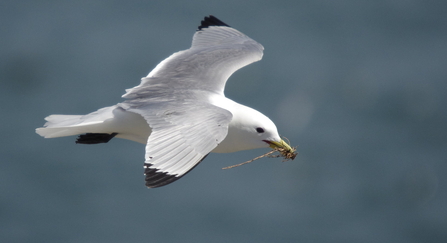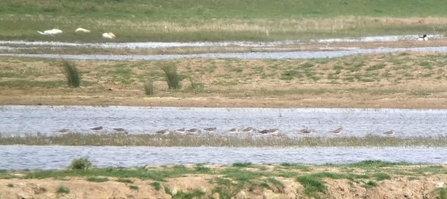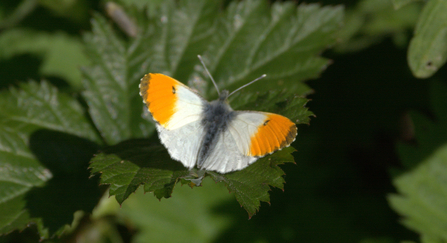Weekly wild news from our reserves, 8th May
Aerial view of Carlton Marshes by John Lord
This week we have received reports that Suffolk’s only population of kittiwakes have returned to their nesting grounds at Sizewell. A population of 380,000 kittiwakes can be spotted on coastlines all around the UK, but for us here in Suffolk, we have just one population that choose the coastline at Sizewell as their nesting grounds, returning here after spending the winter out on the Atlantic.
Breeding in established pairs each year, parents in longer established breeding pairs tend to have more successful in raising young due to sharing the strain and responsibility of raising chicks more equally, meaning both parents can continue to feed well.
Our North East Warden, Jamie Smith, took the opportunity to survey the kittiwake numbers from Sizewell beach whilst they are visiting our coastline.

WildNet - James Rogerson
Peto’s Marsh is in good company!
Peto’s Marsh is a recently acquired stretch of land for Suffolk Wildlife Trust and is proving to be a hit with the waders. Restoration work on Peto's Marsh is currently underway to restore the land from arable farming back to a wet reed bed environment. The site which will have a series of scrapes, ponds and dykes and the mixture of tall reed vegetation complimented with areas of open water will make the mosaic of habitats appealing to a variety of species including wildfowl and waders.
This week Peto’s Marsh was in good company as 17 greenshanks, who were likely to be stopping off at Peto’s on their migration routes, were spotted there. Greenshanks spend the summer in Scotland on their moors and bogs but across the UK are often seen on inland freshwater lakes, marshes and coastal wetlands stopping off on their long journeys.

Greenshank on Peto's Marsh - Andrew Easton
Jack-by-the-hedge
Jack-by-the-hedge is the colloquial name for mustard garlic and can be identified by its characteristic hairless stem and its garlic and mustard smell when its leaves are crushed. Mustard garlic is the perfect place for orange-tip butterflies to lay their there bright eggs. Male orange-tip butterflies are identified by, you guessed it, their orange-tipped wings, with the females sporting alternative black tipped wings instead. Other plants used by orange-tip butterflies are cuckoo flower, hedge mustard, winter cress, large bitter-cress and several more.
Orange-tip butterflies are common throughout the UK and our reserve wardens have spotted several whilst out on our reserves this week.

WildNet - Clive Nichols
Our Carlton Marshes trail cameras snap some of Suffolk’s elusive species
Our trail cameras at Carlton Marshes have picked up a variety of different visitors that have been enjoying our reserve, and this week, Otters and cetti's warblers paid a visit! Otters have been seen regularly across the winter at Carlton Marshes and also at Oulton Marshes in the Oulton Dyke and River Waveney.
Otter live along rivers, lakes and occasionally estuaries and our coasts and use a wide variety of habitats including reed beds, fen and woodland. Mainly feeding on fish, the presence of Otters are often identified by their smelly spraint (faeces) left at the edges of water and with fish bones and scales remnants often being visible. Otters are elusive with sightings of them rare due to being predominantly nocturnal, so it’s great when we catch them sauntering about on our trail cameras.
If you turn the volume up you might just be able to hear another elusive species that likes to keep itself to itself, the cetti's warbler! Often being heard and not seen, the cetti's warbler can be identified by its characteristic bubbling song and is found living among willow marsh and nettles.
Suffolk swifts come screaming back
Andrew Excell our South Suffolk Warden has reported seeing his first swift sightings this year in Suffolk. Swifts, which are well known for their amazing flying abilities and for spending almost their entire lives on the wing including sleeping and mating on the wing! Swifts are summer visitors to the UK travelling from Africa every year to nest.
In the summer, when larger numbers of individuals arrive, swifts take part in screaming parties and they are often a welcome sign of summer when you can hear these cries in the sky.

